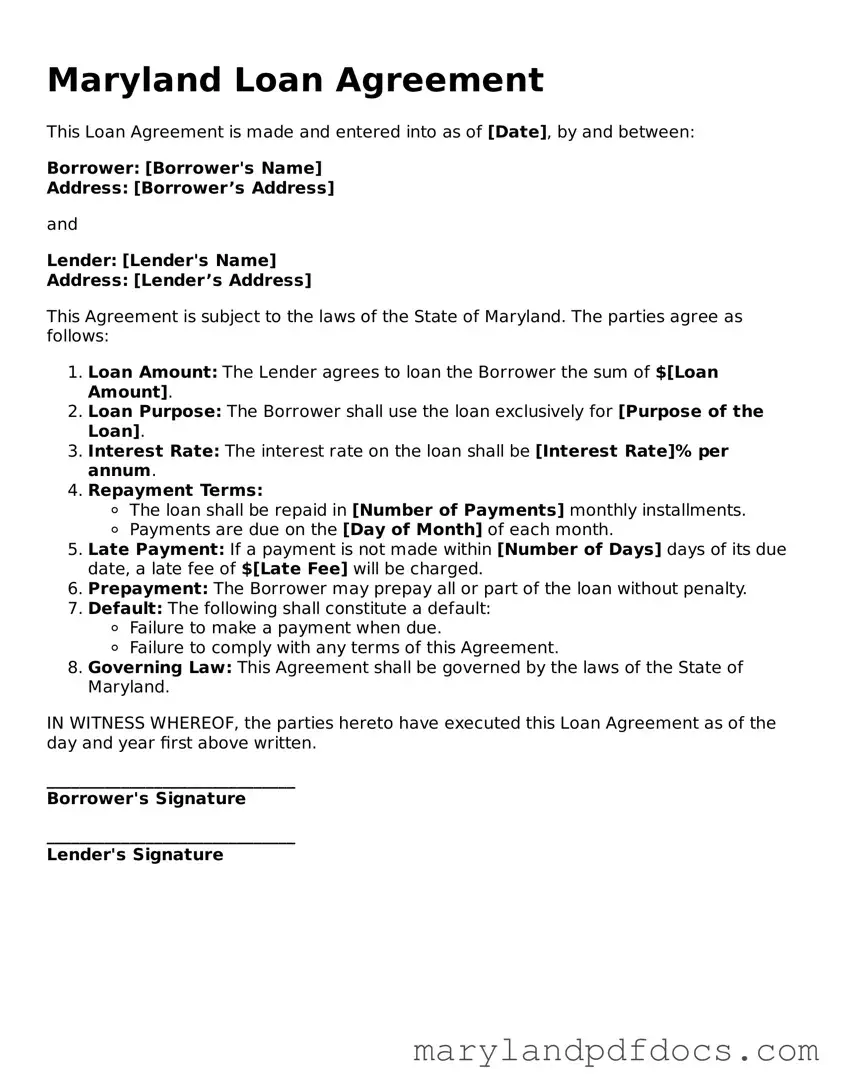What is a Maryland Loan Agreement form?
A Maryland Loan Agreement form is a legal document that outlines the terms and conditions of a loan between a lender and a borrower. It specifies the amount borrowed, interest rates, repayment terms, and any collateral involved. This form helps protect both parties by clearly stating their obligations and rights.
Who can use the Maryland Loan Agreement form?
Any individual or business in Maryland can use this form when lending or borrowing money. Whether you are a private lender, a friend, or a business entity, having a written agreement ensures clarity and can prevent disputes in the future.
What information is required to complete the form?
To complete the Maryland Loan Agreement form, you will need to provide the names and addresses of both the lender and borrower, the loan amount, interest rate, repayment schedule, and any collateral details. It’s also important to include any specific terms related to late payments or default.
Is the Maryland Loan Agreement form legally binding?
Yes, once both parties sign the Maryland Loan Agreement form, it becomes a legally binding contract. This means that both the lender and borrower must adhere to the terms outlined in the document. If either party fails to comply, the other may take legal action to enforce the agreement.
Can the terms of the loan be modified after signing?
Yes, the terms of the loan can be modified, but it requires mutual consent from both parties. Any changes should be documented in writing and signed by both the lender and borrower to ensure that the modifications are enforceable.
What happens if the borrower defaults on the loan?
If the borrower defaults, the lender has several options. They may seek to recover the owed amount through negotiation, or they might pursue legal action to collect the debt. If collateral was involved, the lender may also have the right to seize the collateral as outlined in the agreement.
Do I need a lawyer to create a Maryland Loan Agreement?
While it’s not mandatory to hire a lawyer, it can be beneficial, especially for larger loans or complex agreements. A legal professional can help ensure that the terms are clear and enforceable, reducing the risk of misunderstandings later on.
Can I use a generic loan agreement template for Maryland?
Using a generic loan agreement template can be risky. Laws vary by state, and a Maryland-specific form will ensure compliance with local regulations. It’s best to use a form designed for Maryland to avoid potential legal issues.
Where can I find a Maryland Loan Agreement form?
You can find a Maryland Loan Agreement form online through legal document websites, or you may obtain one from a local attorney. Ensure that the form is up-to-date and tailored for Maryland to meet your specific needs.
What should I do if I have more questions about the loan agreement?
If you have additional questions about the Maryland Loan Agreement, consider consulting with a legal professional. They can provide personalized advice based on your situation and help clarify any uncertainties you may have.
